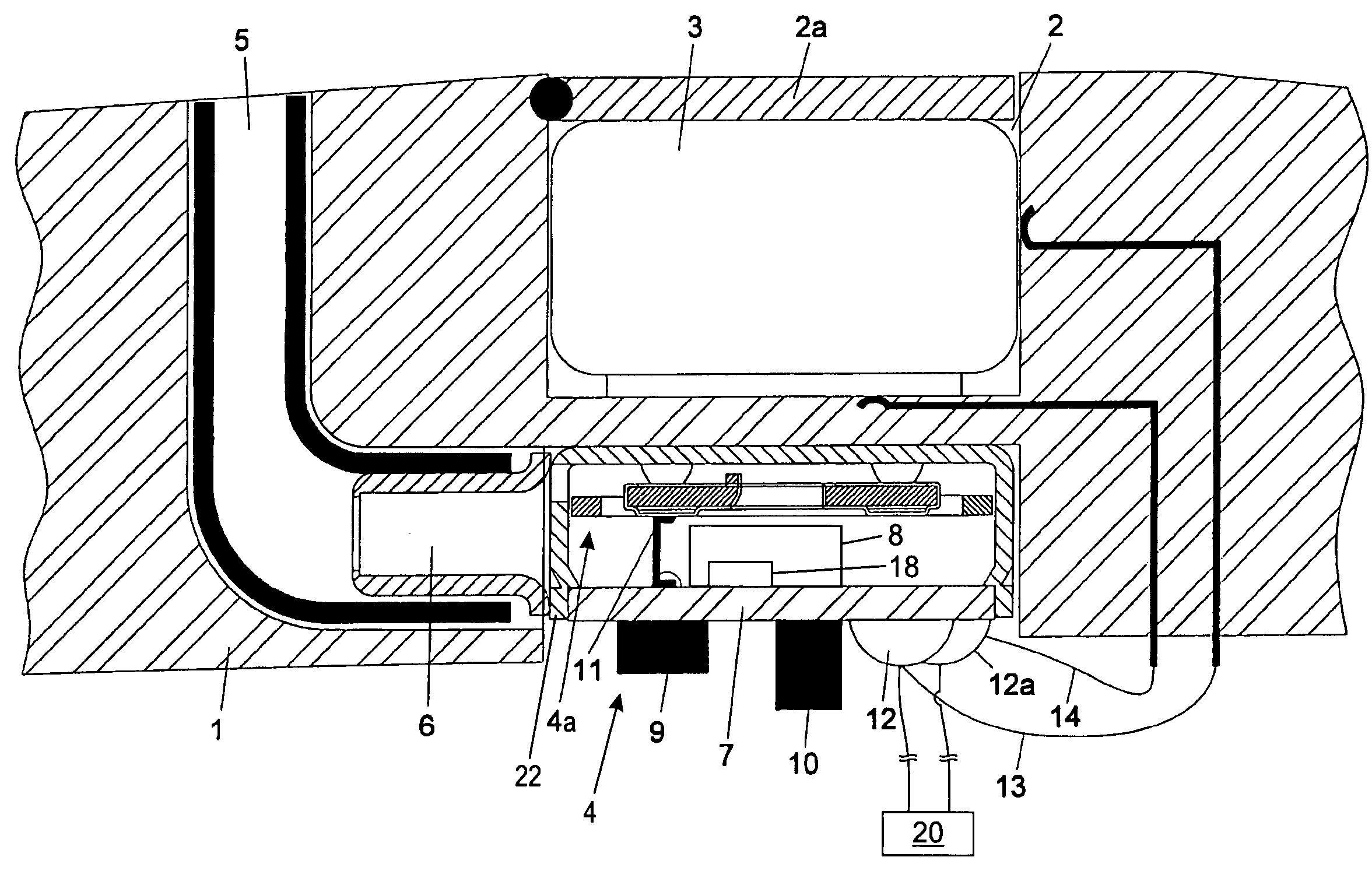Microphone for a hearing aid
a technology for hearing aids and microphones, applied in the direction of electrical transducers, electrical transducers, electrical apparatus, etc., can solve the problems of affecting the reliability of hearing aids, the number of wires needed to connect microphones, amplifiers, receivers and batteries, and the cost of production
- Summary
- Abstract
- Description
- Claims
- Application Information
AI Technical Summary
Benefits of technology
Problems solved by technology
Method used
Image
Examples
Embodiment Construction
[0017]FIG. 1 shows a part of a body 1 of a hearing aid comprising a battery holder 2 with a removable cap 2a for a battery 3, a space for accommodating the housing 22 of a microphone assembly 4 and an inlet channel 5 through which sound waves from the exterior can pass to the inlet opening 6, that is provided in a wall of the housing 22 of the microphone assembly 4. Disposed within the housing 22 of the microphone assembly 4 is a transducer 4a.
[0018]The transducer 4a is a conventional microphone of the electret type, for example as described in U.S. Pat. No. 5,255,246; details of the transducer 4a are not given here, because they are not really relevant for the present invention. A hybrid 7 is provided on which an integrated circuit 8 and, if necessary, passive components 9, 10 are mounted by means of a flip-chip technology or by means of wire bonding. The connection between the transducer 4a and the substrate of the hybrid 7 is made by means of a flexible connection 11 of the type...
PUM
 Login to View More
Login to View More Abstract
Description
Claims
Application Information
 Login to View More
Login to View More - R&D
- Intellectual Property
- Life Sciences
- Materials
- Tech Scout
- Unparalleled Data Quality
- Higher Quality Content
- 60% Fewer Hallucinations
Browse by: Latest US Patents, China's latest patents, Technical Efficacy Thesaurus, Application Domain, Technology Topic, Popular Technical Reports.
© 2025 PatSnap. All rights reserved.Legal|Privacy policy|Modern Slavery Act Transparency Statement|Sitemap|About US| Contact US: help@patsnap.com



